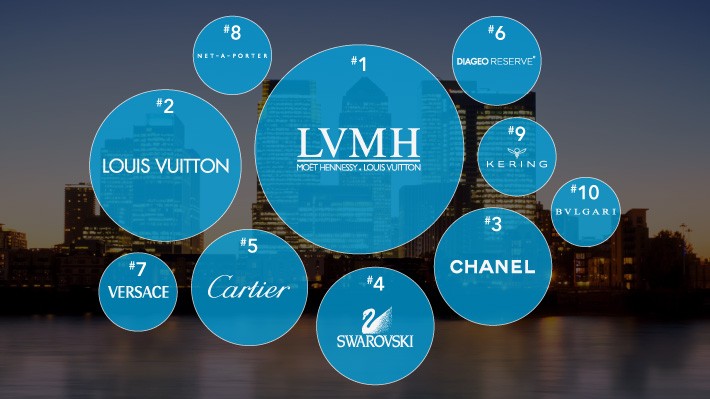Lessons from Europe’s most influential luxury brands
LVMH, Louis Vuitton, Chanel, Versace, Cartier, Swarovski... it’s no coincidence that many of Europe’s most famous luxury brands are also amongst the most influential brands on LinkedIn. Not only do these marquee names know how to translate heritage and expertise into engaging and comment-worthy content; they also know their audience – and where to find them. And there’s much to be learned from how they’ve connected with networks of high net-worth, and highly influential people on our platform.
We’ve used LinkedIn’s Content Marketing Score to analyse the luxury brands that are most effective at translating their content into influence amongst high-income professionals. Scroll down for our infographic with full details of Europe’s top ten, which also includes Diageo Reserve, Bulgari, Kering and Net-A-Porter. But before you do, check out the five content marketing principles that drive their influence amongst their most valuable audiences:
All of the luxury brands in our Top Ten build their LinkedIn content strategy around a company or showcase page and every single one uses company updates as the primary channel for distributing content on our platform. What’s striking is how many of those updates skillfully reference the long heritage and broader narrative of the brand. From the installation of a Swarovski chandelier at the Palace of Versailles to Chanel’s re-acquisition of the historic Villa La Pausa, built by its legendary founder in 1928, our brands’ content has a sense of history as well as a sense of style.
On average, the luxury brands in our Top Ten post four updates every week. This helps to keep them front-of-mind amongst high-value consumers – but it also ensures that those consumers feel uniquely informed about the brands they identify with. Following the company pages of our top brands ensures that you are among the first to know about new announcements and new designs (Versace uses its company page as a virtual catwalk), building a strong sense of community and affinity. It helps that plenty of fashion names and industry leaders are quick to comment on updates, building our brands’ pages’ credibility as a natural habitat for luxury insiders.
Company updates enable brands to build dialogue amongst a community of followers who provide a powerful channel for spreading influence organically. However, almost half of our luxury brands have built on this platform by sponsoring key posts to reach a larger audience – and help extend their community on LinkedIn. Visual appeal is central to the impact and success of Sponsored Updates – and luxury brands have fantastic assets to work with in this regard. A recent update from Cartier, boosting awareness of its new Clé de Cartier watch designs, provides a prime example: visually stunning, it generated hundreds of likes and comments around the role of watches and the nature of high-end design.
Confidence is an essential part of the make-up for luxury brands: confidence in the inherent value of their brand and in the inherent quality of their products. For several of the luxury brands in the Top Ten, that confidence is expressed through a willingness to curate third party content rather than preaching their qualities directly. Diageo Reserve’s showcase page mixes new product updates with third-party features on the key issues for the luxury market, reinforcing the brand’s expertise and leadership. For Versace, there was no better way to demonstrate cultural centrality than to reference an article crediting a daringly low-slung Jennifer Lopez outfit with bringing about the launch of Google Images.
Related articles


